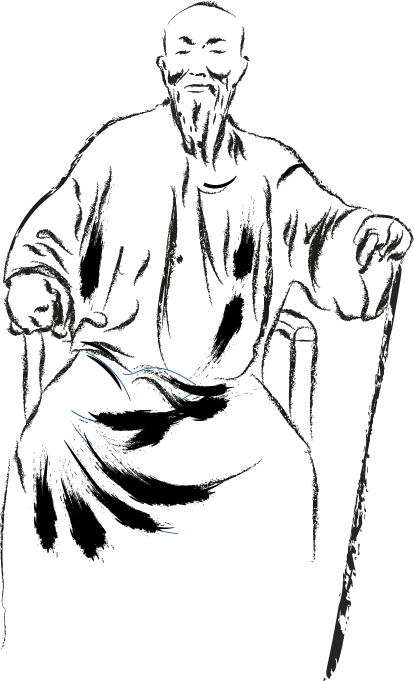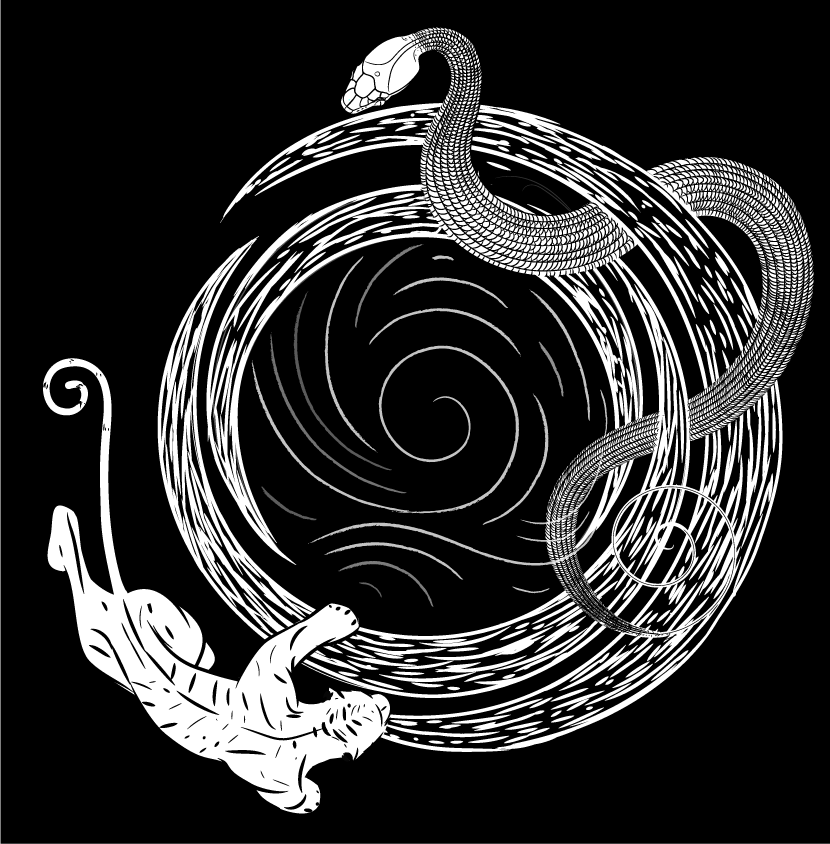I work to make my online Bagua training as clear and simple as possible. Over years of teaching, I have developed and collected a number of ways to describe Bagua in a nutshell.
A good nutshell description can be an amazing guide for a starting student and reveal new vistas to experienced practitioners. It can save time and prevent confusion. However, like anything else, even the best summary description can fail or cause problems.
In this article, I’ll offer you a very concise but helpful description of Bagua, and go into a few ways that nutshells can not have the desired effect – or be abused.
Alright, the nutshell… Bagua is an exaggerated, twisted contralateral walk. It’ll make more sense if you watch the video and read what’s below.
Why is this nutshell a powerful starting point?
The contralateral walking gait has deep roots in our anatomy and nervous system. Students who start with this have something concrete that they can practice and investigate. It ties the use of the spine to the use of the limbs. It uses a natural movement pattern and shows that it can be adapted to serve different functions. Done correctly it involves a stretch-release across the body. The gait pattern demands mobility as well as stability and it introduces how these two contrary qualities interplay in martial use. The interplay of mobility and stability is yin-yang pair that is repeated in a number of ways strategically, tactically and kinematically.
You get the point, there is a lot in it.
But what can go wrong?
The first thing is that the student doesn’t get it. That’s up to me to some extent, how well I explain it. Some nutshell descriptions work better with certain people, which is why there are a variety of them students can learn if they want.
The video I made with this article is very short. I like to think that a few people will have done enough practice when they watch the video that they get it quickly and have an aha moment. Still, I imagine a lot of people will dismiss it. I go into much more explanation in the online Bagua trainings, or Zoom classes.
A second concern is that a student gets the nutshell, is very happy with it then decides “That’s all there is! I understand Bagua now!”. This can apply to external observers who confuse a superficial appreciation with the understanding that comes from extensive practice and experimentation. Hopefully, if the student actually practices they will get beyond the Oh I understand it all stage.
The third issue is a mirror of the second. It has roots in either a desire for a sense of superiority or attachment to an understanding that does not seem to have an obvious link to the nutshell – in this case the contralateral gait with a twist.
Such people will say “That’s the limit of Edward’s understanding, that’s all he knows…Bagua is really about…” add in the buzzwords and cosmic concepts of your choice – Qi, Dao, shamanic practices, parallels between the orbits of the planets, Yijing philosophy etc People who leap argue that way are either disingenuous or ignorant. Using a nutshell description doesn’t limit the art to that nutshell.
What’s in the nutshell metaphor?
A nutshell contains a nut, and a nut is a seed. Plant it, tend it and it will grow into a tree – and you can find many links between Bagua and the tree metaphor. As I have said before, you can’t do it all at once. You can’t explain it all at once. You can’t practice it all at once. You need to start somewhere, and a seed seems a good place. A seed that is a simple physical practice seems preferable to something theoretical.
If this makes sense to you and you’d like to have access to more down-to-earth descriptions that can be taken a long way then take a look at the Online Bagua training that I offer.
Online Bagua training
Bagua circle walking – *NEW* Xingyiquan foundations – Gao style Bagua – Qigong and breathing magic –



Leave a Reply